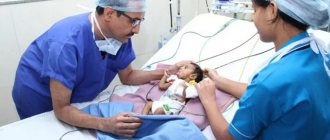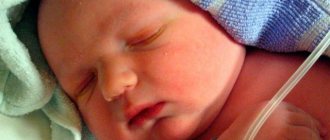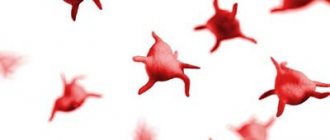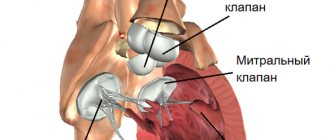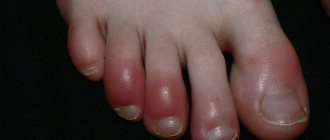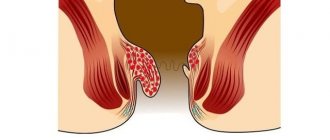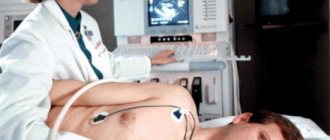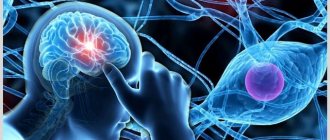Chronic cerebral ischemia is a gradually increasing dysfunction of the organ, which appears as a result of deformation of its shaped elements due to poor blood circulation in the brain. In this situation, the brain suffers due to the low amount of glucose and oxygen.
As a result, problems with brain function appear. A person becomes forgetful, depressed, and his mood constantly changes. The disease is dangerous to health. Death often occurs due to damage to the brain that is incompatible with life.
Features of the development of the disease
Chronic cerebral ischemia is a complex disease provoked by problems with blood supply. The disorder affects all systems of the human body, with the brain being the most sensitive. A lot of cholesterol accumulates in the vessels. Normal blood flow becomes difficult, and chronic atherosclerosis appears . The disease is characterized by blockage of blood vessels. Their main transport function is lost.
Through vessels clogged with cholesterol plaques, blood cannot enrich the organs with oxygen in the required amount. This condition provokes stress in the body. Chronic cerebral ischemia is detrimental to this organ, since it requires the most intensive supply of oxygen. The consequences of ischemia can be fatal.
Cerebral
There is chronic and acute cerebral ischemia of the brain, but for the most part it is acquired. Cerebral ischemia in newborns is called congenital.
Cerebral ischemia in children is an impaired supply of oxygen to the child’s brain tissue. At the same time, hypoxia is observed, which together may change its structure.
This usually appears in the womb (child developmental defects, woman’s addictions, harmful environmental conditions) or during childbirth itself. These processes are easily observed by neonatologists or pediatric neurologists.
Normal blood flow in newborns and during ischemia
The clinical disease is represented by a number of neurological factors: excessive excitability, or slowness in the mild stage, and convulsions appear in the moderate stage. If coronary artery disease of the head is advanced, there is organic damage to the brain and the baby is sent to intensive care.
Young mothers should not be too scared, since cerebral ischemia in the early and middle stages can be cured with appropriate treatment. After undergoing therapy, the child looks healthy.
Causes of the disease
One of the main causes of chronic cerebral ischemia is vascular disease of the head. The cause of such disorders in 60% of cases is atherosclerosis. When high blood pressure persists for a long time, pathological changes occur in the muscle tissue of the veins and arteries, their walls thicken and the lumen becomes smaller. in the walls of blood vessels causes a deterioration in cerebral blood flow and a lack of oxygen .
Other common causes of chronic cerebral ischemia: heart disease, kidney problems, tumors, decompression sickness, vasculitis or other systemic disorders, vascular problems, obesity, blood diseases, venous insufficiency, diabetes. The disease develops due to age-related changes in the body.
Causes of cerebral ischemia
Cerebral ischemia in infants can develop due to various reasons:
- development of intrauterine hypoxia. This condition occurs when the blood supply to the fetus is disrupted due to various reasons (most often placental abruption, its pathology);
- asphyxia during childbirth. Oxygen starvation of the brain occurs when the umbilical cord is compressed during pushing. Asphyxia can also occur due to prolonged labor;
- negative impact on a woman’s body during pregnancy of various diseases - cardiovascular, endocrine, respiratory;
- the presence of bad habits in the expectant mother - alcohol abuse, smoking;
- the birth of a child at a period that is less than 37 weeks or more than 42;
- the presence of severe neurological diseases in a pregnant woman, especially epilepsy;
- insufficient weight of the baby at the time of birth;
- the presence of developmental defects in the baby that lead to disturbances in the functioning of the cardiovascular or respiratory system;
- rapid labor (less than 2 hours);
- the presence of dangerous pathologies in the last weeks of gestation - late gestosis, oligohydramnios;
- multiple pregnancy poses a potential danger;
- the presence of a fever at the time of childbirth (above 38°C);
- the age of the woman giving birth is less than 18 or more than 35 years.
What changes are characteristic of chronic ischemia?
Under the influence of various factors that interfere with normal blood flow, hypoxia is formed, metabolism deteriorates, lipids are oxidized, and free radicals are formed that negatively affect nerve cells. When neurons are damaged, they are destroyed and necrosis occurs. As a result, the brain begins to resemble a sponge in appearance.
As degenerative changes progress, the space around the blood vessels increases and gliosis develops. Gliosis is somewhat reminiscent of sclerosis in other organs, which is also accompanied by chronic hypoxia. Such transformations are often diffuse in nature; they are localized in all parts of the central nervous system.
Periventricular ischemia is considered a condition that distinguishes the chronic form of the disease. This irritates the nerve tissue surrounding the ventricles.
Treatment of cerebral ischemia
If the disturbances during cerebral ischemia are minor, the recovery period is short. In some cases, all unpleasant symptoms disappear on their own within a few days. Doctors may also recommend taking a course of massage. It has a positive effect on the child’s muscle tone, has a beneficial effect on his general condition and produces a relaxing effect on the nervous system. In more severe cases, more serious treatment is indicated, which includes:
- restoration of respiratory function. In some cases, after asphyxia, the newborn must be placed on mechanical ventilation and closely monitor all vital signs;
- treatment of seizures. If they manifest themselves intensively, special anticonvulsants are prescribed that relieve this symptom;
- restoration of heart activity. It's not just the brain that suffers from lack of oxygen. If necessary, medications are prescribed that maintain a normal heartbeat.
Pathogenesis of brain lesions
Ischemic disorders provoke deterioration of blood flow and hypoxia. Neurons do not receive the necessary energy . This provokes intracellular biochemical changes in brain tissue.
The pathogenesis of the disorder is due to the sequential manifestation of a list of biochemical transformations under the influence of insufficiently oxidized oxygen, and with the appearance of oxidative stress based on a gradually progressive deterioration in the blood supply to the formed elements of brain tissue. In this case, microlacunar areas of ischemia are formed.
Parents' actions
Any symptom that appears should alert adults. Calling a doctor is the first responsibility of parents. Slowing down in action can cause serious complications or threaten the baby’s life.
It must be remembered that the brain of a newborn, especially a premature one, is completely unstable to diseases, especially to hypoxia.
It is necessary to undergo all the tests prescribed by the doctor, give the child prescribed medications - nootropic, diuretics, to restore blood vessels.
You can keep a health diary in which parents note all the baby’s reactions to others, his behavior, sleep, and period of activity. Inform the doctor of any changes in the child's reactions. You cannot provoke the disease by visiting crowded places, noisy companies, sudden movements, or raised voices of adults, so as not to frighten the child.
Walks at least twice a day in the fresh air in the park area are required. You should not wake a newborn, even if it is time for him to eat.
In case of prolonged cramps, refuse massage. Parents are recommended to do gymnastics with their baby to strengthen fine motor skills and muscles.
Symptoms of the disorder
Chronic cerebral ischemia of the 2nd degree causes transformation of the subcortex, the formation of demyelination with oligo damage. Symptoms of the disease have an objective and subjective nature.
Symptoms are characterized by degrees of the disorder. The main signs of the disease: frequent headache, feeling of heaviness, dizziness, constant deterioration of attention and memory, sleep problems, psychological lability, poor coordination of movements.
As the blood supply to nerve cells becomes more difficult due to the development of stenosis and spasms of the cerebral arteries, the symptoms worsen, sites of infarction formation appear with accompanying focal signs, the intensity of which depends on the indicators of cerebrovascular disorders.
Degrees
The degrees of cerebral ischemia are distinguished according to a number of complications and the severity of neurological manifestations.
1st degree
Symptoms of cerebral ischemia of the first degree:
- Constant headache, inherent heaviness;
- A person gets tired very quickly;
- Memory is impaired, it becomes difficult to concentrate on what is happening;
- Insomnia;
- Emotional instability.
We can say that these manifestations are insignificant, and it is unlikely that everyone will consult a doctor about them. But if treatment for ischemia is started in time, meaning at this stage, where strong neurological abnormalities are not yet observed, then the symptoms can be easily eliminated, as well as the disease itself can be prevented.
2nd degree
With the second degree of cerebral ischemia, complex changes in the nervous system are visible:
- Deviations in memory;
- Headache;
- Impaired coordination of movements;
- Disability.
The second degree of cerebral ischemia in elderly people manifests itself in disruption of the brain matter as a chain of pathological reflexes (intellectual-mnestic disorders). People at this stage cannot use mental activity, there is also emotional instability, and criticism is reduced.
3rd degree
In the third degree of cerebral ischemia in elderly people, severe neurological disorders and symptoms of organic brain damage are obvious. Patients often lose consciousness, lose their ability to work, and are unable to care for themselves.
The more impaired the functioning of the brain, the less a person complains, but this does not mean that there are no complaints. Often, as a result of dementia, the patient simply cannot express what is bothering him. Despite this, neurologists easily diagnose chronic cerebral ischemia, see a clear picture of the disease and select treatment methods.
Stages of disease development
Each stage of the disease has its own symptoms. Let's consider 3 degrees of chronic cerebral ischemia:
- Initial . It presents the main symptoms in the form of migraines, memory loss, and dizziness. Sleep problems are moderate. Emotional lability and general weakness appear without the presence of any neurological signs.
- Stage of subcompensation , which is characterized by a gradual worsening of symptoms and psychological transformations, apathy, a depressive state, and a deterioration in the list of interests appear.
- Decompensation with serious neurological disorders provoked by the appearance of numerous lacunar and cortical infarcts.
Symptoms and degrees of ischemia
Depending on the clinical signs, three degrees of cerebral ischemia are distinguished:
I degree, or initial stage. The patient feels well, but symptoms are already beginning to appear, which are often attributed to age, fatigue, change in weather, and spring vitamin deficiency. Patients complain about:
- recurrent headaches;
- slight dizziness when changing body position;
- numbness in the fingers, especially at night or when working for a long time in a forced position (at the computer, on the assembly line);
- constant drowsiness during the day with poor night sleep;
- memory loss;
- decreased resistance to physical and emotional stress, rapid fatigue;
- mental changes: anxiety, irritability, absent-mindedness, some slowness of thought processes.
Usually all complaints are subjective; a neurological examination does not reveal any gross disorders. Pathology can be detected by ultrasound of the vessels of the brain and neck, magnetic resonance imaging.
II degree, or stage of subcompensation, when metabolic processes in brain cells slow down significantly. This manifests itself as progression and worsening of existing symptoms. Such patients have a lot of complaints, but they are all of a general nature. It is difficult to communicate with a person, he becomes capricious. Clinically, subcompensation manifests itself:
- impaired coordination of movements: gait changes, instability when walking increases, the ability to perform precise actions is lost;
- parkinsonism syndrome: trembling of hands, legs, head, slowness of movements, speech;
- a sharp decrease in performance up to the loss of professional skills;
- progressive dementia;
- cognitive impairment: criticism towards oneself and others decreases, depression occurs.
Symptoms of the second degree can be easily identified during a routine neurological examination:
- reflexes of oral automatism;
- focal neurological symptoms;
- staggering in the Romberg position.
III degree, stage of decompensation - gross defects:
- disturbance of movements in the limbs;
- pronounced coordination and vestibular deviations, when the patient cannot even get out of bed without assistance, is unable to determine the position of his body at the moment;
- loss of ability and simple self-care skills (doesn’t know how to go to the toilet, dress, wash, all this is simply forgotten);
- urinary and fecal incontinence;
- memory loss up to complete amnesia;
- mental disorders: hallucinations, attacks of aggression, severe cognitive decline;
- progression of Parkinson's disease, its symptoms can no longer be corrected by taking anti-Parkinsonian drugs.
Ischemia in newborns
Cerebral ischemia in newborns is common. The problem arises due to brain hypoxia that appears during childbirth. The disease continues at stage 3, but diagnosis is often fraught with difficulties, since not all symptoms can be identified. Therefore, doctors have identified several syndromes:
- Hydrocephalic . In children with similar syndromes, the head becomes larger and the pressure inside the skull increases. The cause involves the accumulation of cerebrospinal fluid in the head.
- Nervous excitability . The newborn's muscle tone changes, tremors appear, sleep deteriorates, and the child always cries.
- Comatose syndrome . The newborn plunges into an unconscious state and does not come out of it for a long time.
- CNS depression syndrome . Changes in muscle tone occur, reflexes weaken, and strabismus appears.
- Convulsive syndrome . It is characterized by muscle spasms and twitching.
Periventricular ischemia
Olesya
Result of ultrasound of the brain. I'm panicking...
Based on the results of neurosonography (ultrasound of the brain), we received a monthly conclusion that stated: “periventricular ischemia. Small subependymal cyst on the left (diameter 2 by 3 mm).
Moms, who has encountered similar diagnoses, what treatment were you given, what were the results? Is the baby's overall development affected? We will only see a neurologist on Tuesday, and in general I would like to have an idea of what you are dealing with from the words of people who have encountered this, and not listen to dry medical terms, most of which you won’t understand a damn thing Read more →
Alishka
ultrasound GM
Babies should have ultrasounds every month. We only got the ticket now. Conclusion: Ultrasound – signs of periventricular ischemia. Traces of SEC on the left. They said get treatment and go for an ultrasound again. In general, I was upset(((My boy was born with his buttocks. And during childbirth I supposedly squeezed him... well, why not squeeze him... who treated this thread??? Read more →
Natalia
Hello again!
And HELLO again! Unfortunately, I couldn’t restore my account, so I registered again! I have a daughter, Dasha, 5 years old, diagnosed with cerebral palsy, spastic diplegia.
Here is our story - Dasha was born at 37 weeks in an agonal state due to acute blood loss during childbirth (there was a rupture of the umbilical cord vessels) and asphyxia, and was resuscitated, spent 7 days in intensive care (on mechanical ventilation for 4 days), then another month of intensive care.
The condition was serious but stable (MRI showed cerebral hemorrhage and cerebral edema), doctors... Read more →
Masha Krinichnaya
The article I was talking about. The true physiology of childbirth
I highly recommend reading it. The true physiology of childbirth M.V. Golovach Without knowledge of the true physiology of childbirth, one cannot actively intervene in the birth process, as this can damage the birth process itself and, most importantly, harm the health of the child being born.
A serious introduction and discussion by obstetricians of our country of the hemodynamic biomechanism of childbirth, discovered and proven by domestic scientists, should radically change the approach to childbirth.
Programmed labor, active management of labor with induction and stimulation - medicinal (oxytocin, prostaglandins, antiprogestogens) and manipulative (osmotic and mechanical dilators) - should be prohibited. Prohibited… Read more →
Conception
Discuss your topic in the community, find out the opinions of active Babyblog users
Go to community
nataliy
Dear mothers. I ask for your help and support.
Our little Ilyusha needs help, we are 2.5 years old, but during this time a lot has happened to him. At 2.5 months we had our first epileptic attack (that’s what the doctors said, but at that time they didn’t give us an exact diagnosis). Ilyusha spent several days in intensive care.
We were registered with a neurologist. Analyzes, examinations, it’s impossible to list everything. We thought it had worked out, but no, after some time the condition began to deteriorate again, after which there were 3 more attacks. Over time, we managed to send Ilyusha to Khabarovsk...
Continue reading →
Married (Sasha)
This is p…..c For the faint of heart, please don’t read it.
The cause of cerebral palsy and other damage to the central nervous system is in the induction and stimulation of labor. Induction and stimulation of labor is a threat of damage to the central nervous system of the born child. Nikolsky A.V., Candidate of Medical Sciences, neurologist “The fetus as a patient” (Motto of the World Congress of Perinatologists, Amsterdam, 1998.
) Obstetricians in our country entered the 21st century without a generally accepted, scientifically proven theory of the birth process (1*, p.3). Is it possible to give birth without knowing why and due to what processes in the body of the pregnant woman and the fetus they occur? In the 20th century, until the 50s abroad and until the early 60s in our country, obstetricians...
Continue reading →
Hedgehog
I'm really looking forward to the word MOM
My Nikitos is 1, 8 and a half months old, the birth was difficult, lasted 9 hours 55 minutes, the child’s head circumference was 37, the child was 56 cm, 3850 kg, a boy. After birth, the Apgar score was 3 points. Asphyxia (single entanglement of the umbilical cord around the neck).
He was admitted to the intensive care unit in a very serious condition, convulsions, cerebral edema, periventricular ischemia, pulmonary failure, coma. Oxygen independence only on the 9th day. A month after resuscitation, the main diagnosis was: Cerebral ischemia of the 2nd degree.
Intraventricular hemorrhage of the 1st degree on the right (choroid plexus pseudocyst) Syndrome of tone disturbances. Convulsive syndrome, cerebral edema… Read more →
Raechka)
Ultrasound of the brain...
Today we went for a brain ultrasound. In two places we have something tight there, and a blood vessel burst.....probably yesterday, yesterday I screamed for the first time in a month and a half, so a little more and I would have needed the help of a psychiatrist (((.dad reassured me.
So, about the ultrasound... and the swelling has not yet gone completely, it seems that it should go away by 2 months, after giving birth. I’m sitting here and now I’m afraid and crying - is this even treatable, and what does it even mean? Damn, how scary, it’s still a headache. Tomorrow…
Continue reading →
AURORA
The cause of cerebral palsy and other damage to the central nervous system is artificial stimulation of labor
https://uu-biblioteka.ucoz.ru/publ/medicina/prichina_dcp_i_drugikh_povrezhdenij_cns_v_iskusstvennoj_stimuljacii_rodov/5-1-0-16 ……………….. “The fetus as a patient” Motto of the World Congress of Perinatologists, Amsterdam, 1998. Obstetricians in our country entered the 21st century without a generally accepted, scientifically proven theory of the birth process (1*, p.3).
The idea that during childbirth the uterus “works like an ordinary hydraulic machine” was formed at the turn of the 19th-20th centuries. According to these ideas, during uterine contractions, intrauterine pressure increases, which causes the child to move through the birth canal and open the cervix.
These ideas, as an immutable truth, are spelled out in modern medical educational and methodological... Read more →
Tatiana123022
The cause of cerebral palsy and other damage to the central nervous system is the induction and stimulation of labor
Report by a neurologist, a member of the organization “Promoting the protection of the rights of people with disabilities with consequences of cerebral palsy,” Mikhail Golovach, read at the international conference “Midwifery Today”. https://www.domrebenok.ru/blog/prichina-dcp-i-drugix-povrezhdenij -cns-v-indukcii-i-stimulyacii-rodov/The report is long, I quote selected excerpts.
Until the 50s of the 20th century abroad and until the early 60s in our country, obstetricians used the practical experience accumulated over centuries when attending childbirth.
For example: obstetricians considered it unwise to rupture the amniotic sac (amniotomy) before the fetal head entered the pelvic cavity (lower segment of the uterus), and during childbirth they tried to preserve the amniotic sac as long as possible with... Read more →
Hedgehog
Should have been the happiest day
Girls, help!!! The birth was difficult and lasted 8 hours 55 minutes, the child had a head circumference of 37, the child was 54 cm, 3850 kg, a boy. After birth, the Apgar score was 3 points. Asphyxia (single entanglement of the umbilical cord around the neck).
He was admitted to the intensive care unit in a very serious condition, convulsions, cerebral edema, periventricular ischemia, pulmonary failure, coma. Oxygen independence only on the 9th day. We spent a month in intensive care, now the main diagnosis is: Cerebral ischemia, degree 2.
Intraventricular hemorrhage of the 1st degree on the right (choroid plexus pseudocyst) Syndrome of tone disturbances. Convulsive syndrome, history of cerebral edema... Read more →
Tatiana
The true physiology of childbirth
Without knowledge of the true physiology of childbirth, one cannot actively intervene in the birth process, as this can damage the birth process itself and, most importantly, damage the health of the newborn child.
A serious introduction and discussion by obstetricians of our country of the hemodynamic biomechanism of childbirth, discovered and proven by domestic scientists, should radically change the approach to childbirth.
Programmed labor, active management of labor with induction and stimulation - medicinal (oxytocin, prostaglandins, antiprogestogens) and manipulative (osmotic and mechanical dilators) - should be prohibited. Prohibited as dangerous to the health of a newborn child (damage... Read more →
From-M
Modern scientific ideas about the biomechanism of childbirth, the structure and physiology of the uterus, the influence of the period
https://naturalbirth.ru/public/biomehanizm-rodov.php Obstetric aggression M.V.
Golovach, neurologist, consultant of the ROBOI “Promoting the protection of the rights of people with disabilities with consequences of cerebral palsy.” Knowledge of the structure and functioning of the uterus during pregnancy and childbirth is the basis for successful monitoring of pregnancy by an obstetrician or midwife, successful support of childbirth and the greatest guarantee of the birth of a healthy child. Continue reading →
Source: https://www.BabyBlog.ru/theme/periventrikulyarnaya-ishemiya
Consequences of the disease
Ischemia in the first stages of development can provoke complications. Hypoxia or metabolic problems often occur, which lead to the formation of other types of pathologies: heart attack, various forms of encephalopathy, problems with speech function, paralysis, epileptic seizures, paresthesia.
Fragments of brain tissue die during a stroke and cannot be restored. Modern medicine uses various treatment methods, but some experts question their effectiveness.
With encephalopathy, the formed elements of the brain are destroyed. Paralysis limits the ability to move. Paresthesia causes a weakening of the sensitivity of nerve endings or a complete loss of speech function. In children, this disease causes mental retardation.
The development of chronic cerebral ischemia proceeds slowly, and no symptoms are detected in the first stages . Signs of the disorder occur when the patient can no longer be cured. The success of therapeutic techniques depends on the duration of hypoxia and its effect on other parts of the body.
What is chronic cerebral ischemia?
Chronic cerebral ischemia (CHI) is the international name for the disease known as “dyscirculatory encephalopathy”.
Both of these names very clearly describe the essence of the disease: due to chronic circulatory disorders, the brain constantly suffers from ischemia, this leads to the occurrence of small-focal lesions of brain tissue and the appearance of various psycho-neurological disorders.
Causes of CCI
The most pressing causes of CCI today are atherosclerosis and hypertension, which lead to damage to the arteries of the brain.
Much less common are cases of disease caused by pathological changes in the venous bed, blood coagulation system and autonomic regulation of the functioning of the body. In addition to the main causes, provoking factors (risk factors) play an important role in the development of CCI.
They can be divided into two large groups: those that can be corrected and those that cannot be corrected. Uncorrectable factors include:
- Hereditary predisposition. If someone in the family suffered from cerebrovascular accidents, their descendants have a much higher risk of developing CCI.
- Elderly age. The older a person is, the more likely he is to develop CCI.
The following risk factors can be adjusted:
- Bad habits. Everyone can quit smoking and limit their alcohol consumption. Moreover, it is most important to give up cigarettes, since it is from them that the blood vessels narrow and become more brittle.
- Excess weight.
- Diabetes. It is necessary to promptly identify this disease and carry out its treatment.
- Inactivity.
- Poor nutrition.
Why is CIM dangerous?
Perhaps chronic cerebral ischemia would not be talked about so much if this disease were not one of the leaders among those that lead to disability.
People who have the last stage of this disease become absolutely helpless, they cannot care for themselves, cannot adequately respond to the world around them, and in some cases cannot move normally (as a rule, they are given disability of the first group).
In addition, against the background of chronic circulatory disorders and cerebral ischemia, an acute disorder can develop - ischemic or hemorrhagic stroke. These pathological conditions are deadly.
How to recognize CHI?
At the initial stages of the development of the disease, the symptoms are rather indicative, since they also occur with other diseases, as well as with banal overwork. For example:
- Irritability and mood lability.
- Frequent headaches.
- Memory impairment.
- Sleep disorders.
The appearance of these signs cannot be ignored, especially if there are concomitant diseases and pathological conditions such as arterial hypertension, diabetes mellitus, obesity, dyslipidemia, increased blood clotting, previous strokes, etc.
CHEM stages
There are three stages (degrees) of chronic cerebral ischemia:
- CCI of the 1st degree is characterized by various subjective disorders, that is, disturbances in well-being that the patient complains about. These include dizziness, headaches, memory impairment, noise in the head, deterioration in performance, and unmotivated weakness. Objectively, the doctor can identify some neurological disorders and signs of asthenic syndrome in the patient.
- CHI of the 2nd degree already has more serious manifestations - the patient’s ability to work not only worsens, but is completely lost. All the symptoms described above are aggravated, and emotional-volitional disturbances are also added to them. In addition, neurological disorders become pronounced; a neurologist can already identify the dominant syndrome - discoordination, amyostatic, pyramidal, or others.
- CHI grade 3 is a stage of dementia (dementia), which is associated with all the above symptoms. People's intellect and memory are upset, cognitive activity is impaired, and criticism decreases. Quite often, such patients experience fainting and epileptic seizures.
At the first stage of the disease, with the help of complex drug therapy, it is possible to stop the progression of the pathology and improve the patient’s well-being. The prognosis for the second stage is somewhat worse, but the third stage means irreversible changes that cannot be eliminated even with the most modern methods.
Treatment for grade 3 CCI is only symptomatic, allowing to somehow alleviate the patient’s condition. Based on this, we can conclude that any deterioration in well-being cannot be ignored, since only timely identified dyscirculatory pathologies of the brain can be treated.
Diagnostics
When the first signs of CCI appear, you need to contact a neurologist who can examine and determine exactly what it is: overwork or, indeed, cerebrovascular accident and chronic cerebral ischemia. To identify the cause of the development of CCI, the patient is prescribed a number of studies:
- X-ray of the skull and cervical spine.
- Rheoencephalography.
- Doppler examination of the vessels supplying blood to the brain.
- CT scan of the head.
- Advanced biochemical blood test (with mandatory determination of lipid profile and glucose).
- ECG and EchoCG.
In addition, if there are symptoms of CCI, the patient is referred for consultation with a psychiatrist, ophthalmologist, therapist, cardiologist and other specialists if necessary.
Source: https://KardioPortal.ru/content/chto-takoe-hronicheskaya-ishemiya-golovnogo-mozga
Diagnosis and treatment
The choice of therapeutic technique and prognosis will depend on the correct and timely procedure for diagnosing the disease. The doctor must conduct a conversation with the patient, note all signs of ischemia, and use the following diagnostic methods:
- MRI or allows you to determine the localization of foci of inflammation in the head, dilation of the ventricles and atrophic transformations.
- Ultrasound. Using this tool, studies of the vessels of the head are carried out, the degree of their tortuosity, anomalies, and problems with blood flow.
To eliminate the signs of chronic ischemia, medical and surgical treatment methods are used. If we consider the methods of surgical intervention, stenting of the carotid arteries and endaretrectomy.
Medicines used to treat ischemia are classified as follows:
- For antihypertensive therapy. It is necessary to maintain normal blood pressure. The patient should not have any surges in blood pressure. The most suitable groups of drugs for such purposes are antagonists or inhibitors.
- For antiplatelet therapy. Due to the activation of the vascular component of hemostasis, patients are prescribed antiplatelet medications like Dipyridamole.
- Lipid-lowering therapy. Drugs such as Atrovastatin contribute to the normal functioning of the endothelium and thin the blood.
- Combination drugs. Sometimes doctors prescribe several drugs for complex treatment, for example Piracetam and Cinnarizine.
For drug therapy, doctors recommend the following:
- Antiplatelet agents. These are drugs that prevent the development of blood clots. These include aspirin and clopidogrel.
- Nootropic medications stimulate brain function.
- Vasodilators improve blood circulation and help increase the lumen in the veins and arteries. Medicines thin the blood, they contain nicotinic acid, pentoxifylline, etc.
- Satin-containing drugs: atorvastatin, rosuvastatin.
- Medicines that increase vitamin deficiencies.
These drugs are used twice a year for 2 months. In the initial stages, physiotherapeutic techniques are used: acupuncture, massage of the head and collar area, sports, electrophoresis.
What do they pay attention to?
There is no exact list of criteria for determining disability in patients with coronary artery disease - much depends on the individual experience of the patient.
- severity of functional disorders of the cardiovascular system;
- the nature of the myocardial infarction;
- stage of the disease;
- flow stability;
- the presence of complications (after surgery or treatment) and their severity;
- the effectiveness of different treatment options - both medical and surgical.
Disability is also influenced by how much the disease interferes with the patient's life and whether it significantly limits activities. As a rule, if a person is able to take care of himself, there are no significant restrictions, therefore, there is no need to give, for example, the first group.
It is important to take into account that even the presence of one sign does not ensure a positive response from the commission. It is imperative that several indicators coincide.
If, in addition to the main disease, a concomitant one develops, the likelihood of disability increases. Postoperative rehabilitation requires individual measures, many of which are temporary and do not in any way affect disability.
What are the degrees of development?
The disease is dangerous because of its imperceptible onset, which can develop over years, turning into a chronic specific form of cerebrovascular pathological picture.
Processes that cause destruction to the neurons of brain tissue progress. In turn, this leads to a reduction in the flow of blood in the arteries to the parts of the brain.
Prolonged vasoconstriction leads to focal lesions and contributes to the development of microinfarctions.
Therapeutic measures
First of all, it is necessary to normalize blood pressure to prevent stroke and ischemic attacks. The doctor prescribes vasodilators, such as pentoxifylline and anticoagulants.
The course of treatment is led by a neurologist who solves the problems of restoring blood circulation and maintaining the viability of brain tissue.
One of the conditions for successful treatment is the reproduction of standard blood flow to the brain, which will improve the metabolic processes occurring in its tissues. The treatment method will help improve memory, bring consciousness to normality and clarity of thinking. Along the way, motor functions begin to normalize. Nootropic drugs are used in treatment, among which piracetam occupies a central place.
Surgical intervention
Operations are carried out in the final stages of IGM. Sometimes the vessels of the brain are damaged, and drug therapy is ineffective, and surgical intervention has to be performed. A technique using stem cells is practiced . Initially, the embryonic shaped elements are collected and then grown to the required size.
Stem cells are introduced into the body using an IV. The procedure lasts approximately one hour. As a result, new stem cells take the place of the damaged ones and complement the damaged tissue. It is risky to use traditional medicine without additional techniques.
Diagnosis of cerebral ischemia
To make an accurate diagnosis of newborn children, the following diagnostic measures are performed:
- condition assessment. After birth, the baby is carefully examined for the presence of vital reflexes using the Apgar scale. If there are any alarming moments, the baby should be under the supervision of doctors, since his condition can rapidly deteriorate after a short-term normalization;
- blood tests are carried out, on the basis of which one can judge the functioning of all organs and systems;
- MRI. Prescribed in severe cases to determine the degree of brain dysfunction;
- electroencephalography. Using this diagnostic procedure, you can determine the degree of brain damage, its activity, etc.
Traditional medicine
Traditional medicine for ischemia in the head should be used only with the permission of a specialist. The most effective methods are:
- You need to take 1 tbsp. lie medicinal galega , pour boiling water, brew for 2-3 hours. You need to take 100 ml of tincture 2-3 times before each meal. Sweet clover is an excellent replacement for this plant.
- Hop cones , catnip, nonea, chistets are combined in equal proportions and poured with boiling water. You need to insist for at least 3 hours, consume 100 ml before meals.
- Garlic recipes are quite popular. You need to finely crush several cloves and pour alcohol in equal proportions. The tincture is prepared for 2 weeks, then taken 5 drops dissolved in a spoonful of milk.
Prevention measures
Ischemia is considered a fatal disease and leads to severe complications . Therefore, for prevention it is necessary:
- Get out into the fresh air more often.
- You need to adhere to a proper diet. This includes a light diet, most of which consists of fruits and vegetables.
- You need to stop abusing alcohol and quit smoking.
- It's better not to get into stressful situations.
- Do exercises more often with moderate stress on the body.
Doctors advise treating diabetes, vascular hypertension and atherosclerosis. If the onset of the disease cannot be avoided, you will have to stop smoking and reduce physical activity on the body. It is not recommended to stay in the sun for a long time, drink alcohol as little as possible, and follow dietary advice.
The patient's condition largely depends on proper nutrition. With an unbalanced diet, there is a deposition of salts and cholesterol in the body. As a result, plaques form, blocking blood flow in the vessels. It is difficult to deal with such an obstacle.
The supply of oxygen to certain parts of the brain is blocked, which leads to the death of its formed elements. The result of such processes is a decrease in mental activity. It is necessary to contact a neurologist so that a specialist can help clean the blood vessels and restore normal blood flow.
The following situations are cause for concern:
- Unpleasant sensations regularly occur in the area where the heart is located.
- Even with minor physical activity, shortness of breath occurs.
- A person suddenly begins to feel weak and gets tired quickly.
Cerebral ischemia is a complex disease that is asymptomatic for a long time. Therefore, doctors advise reducing the likelihood of developing pathology. Patients at risk should pay special attention to cerebral ischemia.
Symptoms of cerebral ischemia in infants
The nature of ischemia differs in babies who were born on time and in premature babies. Periventricular leukomalacia (pathological process of white matter necrosis) is more common in premature babies (born before 30 weeks).
This is the main cause of cerebral palsy and dementia in children. In babies born at term, the cerebral cortex is injured.
How this will affect the health of the newborn depends on the location of the injured neurons.
Severe and acute asphyxia damages the brain stem, which is responsible for allowing the baby to breathe and the heart to beat. The child has little chance of survival.
To avoid this disease, a woman should think about it while pregnant and do everything to ensure that the child is saturated with oxygen.
There are certain and not complicated rules:
- Fresh air. A woman should be in the fresh air for at least three hours a day;
- bad habits. Smoking and alcohol slow down the flow of oxygen to the fetus;
- positive emotions. A pregnant woman should always be in a good mood, try to avoid negative emotions and stressful situations;
- nutrition. The daily routine must be observed, and the diet must be complete, balanced and rich in vitamins;
- good sleep;
- moderate physical activity;
- adhere to all recommendations of the obstetrician-gynecologist;
- take all tests and undergo ultrasound examinations on time.
Cerebral ischemia in infants is one of the most pressing problems. There are cases when a disease makes a child disabled and does not allow him to adapt socially.
Complex therapy of the disease and its consequences is not an easy process; it takes time and effort, both from doctors and from parents.
The baby's brain has good recovery abilities and, with timely treatment, normalizes its functioning in a short period of time. Treatment is selected individually by a neurologist, taking into account the severity of the pathology, the presence of concomitant diseases in the newborn, and the date of birth.
For mild deviations, medications are usually not required.
Treatment areas for HIE are:
- creating suitable conditions for the growth and development of the child;
- development of the least aggressive medical tactics;
- if necessary, perform artificial ventilation of the lungs;
- maintaining an optimal level of hemodynamics;
- monitoring and correction of biochemical disorders;
- prevention and treatment of seizures.
All infants who have been diagnosed with perinatal encephalopathy are subject to registration with a neurologist and pediatrician. It is necessary to constantly evaluate the child’s development indicators, and if any deviations are detected, correct them.
The following procedures have a positive effect on the development of motor skills: massage, physiotherapeutic treatment, special gymnastics, swimming and exercises in water.
Parents themselves can work with the baby, giving him a restorative massage and rolling him on a fitball. If a baby has hypotonia, it is recommended to perform exercises with him, including on a gymnastic ball. You can bathe your baby in a large bathtub, wearing a circle around your neck.
Daily brush massage, which is carried out with a soft toothbrush according to the following scheme, helps to relieve hypertonicity of the palms and feet:
- 200 movements for each foot from heels to toes.
- 200 movements along the inside of each palm, moving from its base to the fingers.
In any case, it is necessary to carry out the treatment recommended by the neurologist and pediatrician, and perform various exercises with the child to normalize muscle tone. By engaging in the development of your baby, you can achieve very good results.
